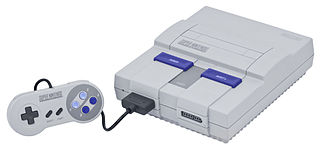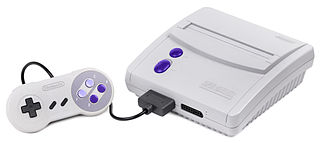Difference between revisions of "SNES Capture"
From SDA Knowledge Base
(→A word of caution) |
|||
| (7 intermediate revisions by the same user not shown) | |||
| Line 2: | Line 2: | ||
[[Image:Snes.jpg]] <br /> | [[Image:Snes.jpg]] <br /> | ||
{| class="wikitable" | {| class="wikitable" | ||
| − | |+Nintendo Entertainment System | + | |+Super Nintendo Entertainment System (SNES) |
|- | |- | ||
|'''Resolution''' | |'''Resolution''' | ||
| Line 18: | Line 18: | ||
== A word of caution == | == A word of caution == | ||
| − | The Super Nintendo (all models) outputs a video signal that is 240 lines of resolution. | + | The Super Nintendo (all models) outputs a video signal that is 240 lines of resolution. This should not be a problem if you are using a DVD recorder to record gameplay, but it may be an issue if you are using a video capture device. Not all capture devices support this resolution. Many standard definition capture devices are able to detect and record video footage at this resolution, however some are not. It is also very uncommon for high definition capture devices to be able to detect and record video footage at this resolution. We are currently gathering a list of capture devices and including whether or not they support 240 lines of resolution [https://forum.speeddemosarchive.com/post/capture_device_compendium_tell_me_about_your_capture_device.html here.] |
| − | == Super Nintendo Entertainment System (SNES) | + | == Models == |
| − | The standard model SNES has a multi-out A/V connector in the back. The | + | |
| + | = Super Nintendo Entertainment System (SNES) = | ||
| + | The standard model SNES has a multi-out A/V connector in the back. The A/V cables that came with the system include the standard red white and yellow (composite video) connectors. This same connector is used by the Nintendo 64 and the Gamecube. You can use the standard A/V cables that are included with the SNES and connect them to your recording equipment to get video footage that is acceptable for SDA. While the standard A/V cables that come with the SNES are composite video, the SNES is also capable of outputting S-Video. Nintendo did not release an official S-Video connector for the SNES, however you can purchase a third party set of cables that includes it. S-Video provides superior picture clarity and quality and it is strongly preferred over composite video. | ||
[[Image:Snessvideo.JPG|frame|right| Left: The standard A/V cables from Nintendo <br /> Right: Third party A/V cables with S-Video]] | [[Image:Snessvideo.JPG|frame|right| Left: The standard A/V cables from Nintendo <br /> Right: Third party A/V cables with S-Video]] | ||
| − | + | <br /><br /><br /> | |
| − | + | = SNES-101 (SNES Jr) = | |
[[Image:Snes2.jpg]] <br /> | [[Image:Snes2.jpg]] <br /> | ||
| − | The redesign | + | The SNES-101 redesign does not have any significant differences from the original SNES in terms of reliability or functionality. One notable drawback to the SNES-101 is not capable of outputting an S-Video signal like the original SNES is. While your recording will still be of an acceptable quality, S-Video is ideal. This is why we generally recommend the original SNES model. |
| − | + | ||
| − | + | ||
| − | + | ||
Latest revision as of 10:17, 9 June 2013
Contents
Console Information
| Resolution | 240 |
| A/V Outputs | S-video,Composite, RF |
| Framerate | 60.0988 progressive/30.0494 interlaced More Info |
| Models | SNES, SNES-101 (SNES Jr) |
A word of caution
The Super Nintendo (all models) outputs a video signal that is 240 lines of resolution. This should not be a problem if you are using a DVD recorder to record gameplay, but it may be an issue if you are using a video capture device. Not all capture devices support this resolution. Many standard definition capture devices are able to detect and record video footage at this resolution, however some are not. It is also very uncommon for high definition capture devices to be able to detect and record video footage at this resolution. We are currently gathering a list of capture devices and including whether or not they support 240 lines of resolution here.
Models
Super Nintendo Entertainment System (SNES)
The standard model SNES has a multi-out A/V connector in the back. The A/V cables that came with the system include the standard red white and yellow (composite video) connectors. This same connector is used by the Nintendo 64 and the Gamecube. You can use the standard A/V cables that are included with the SNES and connect them to your recording equipment to get video footage that is acceptable for SDA. While the standard A/V cables that come with the SNES are composite video, the SNES is also capable of outputting S-Video. Nintendo did not release an official S-Video connector for the SNES, however you can purchase a third party set of cables that includes it. S-Video provides superior picture clarity and quality and it is strongly preferred over composite video.
SNES-101 (SNES Jr)
The SNES-101 redesign does not have any significant differences from the original SNES in terms of reliability or functionality. One notable drawback to the SNES-101 is not capable of outputting an S-Video signal like the original SNES is. While your recording will still be of an acceptable quality, S-Video is ideal. This is why we generally recommend the original SNES model.


